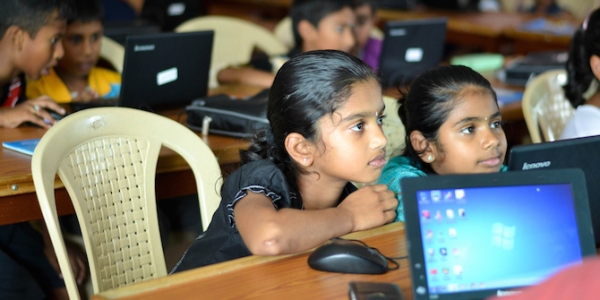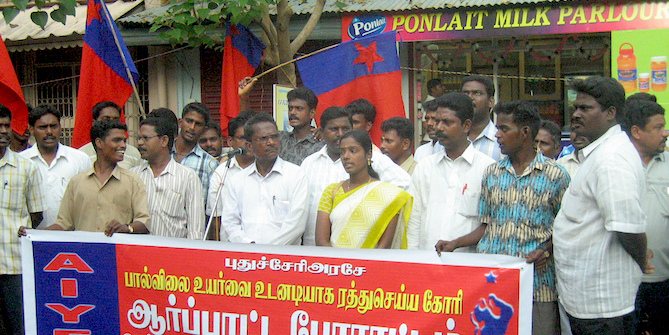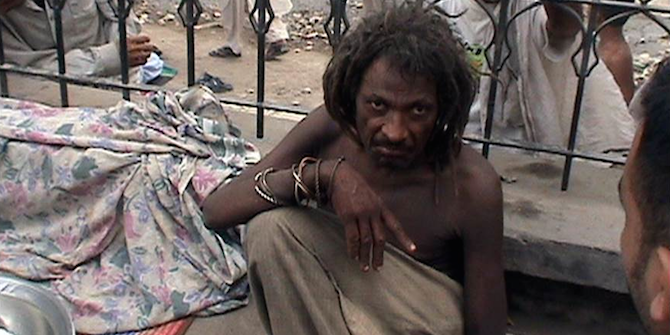 On the eve of India @ 70: LSE India Summit 2017, Arjun Bhatia discusses India’s potential for rapid economic growth, the question of ensuring inclusivity and the obstacles it faces in the global context. He writes that India’s ability to rise to these challenges depends on it harnessing its democratic dividend.
On the eve of India @ 70: LSE India Summit 2017, Arjun Bhatia discusses India’s potential for rapid economic growth, the question of ensuring inclusivity and the obstacles it faces in the global context. He writes that India’s ability to rise to these challenges depends on it harnessing its democratic dividend.
Amidst global economic challenges, “India’s star shines bright”. This sentiment shared by International Monetary Fund’s Managing Director Christine Lagarde last year has since been echoed by corporate and political leaders across the world. The fastest growing economy in the world, India @ 70, looks more resurgent than ever. Whether or not it will shine even brighter in the decades to come depends on its success in mobilising the 1.25 billion citizens that constitute the world’s biggest democracy.
The United Nations projects India to surpass China as the world’s most populous country by 2022. While the traditional stance has been to view India’s huge population as a liability, many economists consider it an asset. At present, less than 5 per cent of India’s workforce has undergone formal skill training, compared to 68 per cent in the UK and 52 per cent in the USA. However, India is estimated to have a surplus manpower of 40-50 million in the next decade. If these young people can be trained effectively it would not only help India to harness the potential of its demographic dividend, but could also address the projected shortfall of skilled workforce in the ageing developed world.
However, the potential blessing of human capital could just as easily turn into a curse. A quarter of India’s citizens are illiterate and over a fifth live below poverty line. With rampant unemployment, this offers a fertile ground for the germination of widespread dissent and discontent. The sprouts of this were seen during the Jat agitation in Haryana and Patidar movement in Gujarat demanding caste-based reservation in educational institutions and government jobs.
India cannot rely on its elite institutions of higher education such as the Indian Institutes of Technology (IITs) and Indian Institutes of Management (IIMs) alone. The majority of graduates in India leave their universities with skills that are not in sync with industry requirements and are considered unemployable. Raising the standard of its institutions and ensuring universal primary education – not just in policy but in reality – would perhaps be the biggest deciding factor of the fortune of this great country and its citizens.

The last year witnessed two key domestic policy developments: the passage of the Constitutional amendment paving the way for the implementation of the Goods and Services Tax (GST) and the demonetisation of 500 and 1,000 rupee notes. The GST envisions a common Indian market, with better tax compliance and governance, and higher growth and investment. Further, the long-term benefits (or drawbacks) of demonetisation are yet to be seen but its introduction came with the promise that it would reduce corruption and foster greater formalisation and digitisation of the economy, thereby increasing the tax base and tax revenue, and boosting GDP growth.
Despite the global cheer for India’s growth story, the greater (and much debated) question when talking of growth that deserves attention is one of inclusivity. As per a Credit Suisse report in November 2016, India is the world’s second most unequal country – the first being Russia – with the top 1 per cent of its population having nearly 60 per cent of the wealth, a marked increase from 40 per cent in 2010. While this data suggests the effects of India’s growth are not trickling down, the clampdown on black money and the associated projected increase in the government’s revenue would – if realised – enable it to raise investment in social welfare schemes as well as boost food security and infrastructure.
It is not without reason that India gets the international attention it does. Its candidature for permanent membership to the United Nations Security Council has drawn strong support, including that of the likes of the US, Russia, and the UK. India became a member of the Missile Technology Control Regime in 2016 and has garnered the approval of most members for its entry to the Nuclear Suppliers Group, the Wassenaar Arrangement and the Australia Group. Countries all over the world are recognising that working with India to address its social and economic issues is imperative to the world’s progress. After all, over one-sixth of humanity is Indian. But it isn’t simply a case of population either; India is the flagbearer of democracy. The failure of its model of liberal democratic rule could have devastating political implications for the world.
India’s territorial disputes with Pakistan and China, the impact of global developments such as Brexit and the election of the new US President, and long standing domestic challenges including malnutrition, health crises, communal violence, and insurgency are just some of the many obstacles that India is up against. Add to that the threat posed to humanity as a whole, especially the developing and underdeveloped world, by climate change, and you have an alarming array of issues to counter. But India has grown stronger through the multitude of challenges it has faced since 1947. Today, the 70-year-young tiger isn’t crouching, it is roaring and ready to fight.
India @ 70: LSE India Summit, presented by Apollo Tyres Ltd, takes place at the Habitat Centre in Delhi on 29-31 March 2017. General Admission tickets are sold out, however a limited number of day tickets are available here. Click here for more information about the conference, including a full conference programme and speakers.
About the Author
 Arjun Bhatia is a writer based in Delhi and is presently working on his debut novel. He has served as an Associate Editor at Inshorts, India’s biggest mobile news company, and has written for the Jaipur Literature Festival and e-Fiction India magazine. He has also co-authored an anthology of short stories called Mango Chutney. He loves listening to audiobooks, holds stand-up comedians in high regard, and recommends that you watch Before The Flood, before it floods.
Arjun Bhatia is a writer based in Delhi and is presently working on his debut novel. He has served as an Associate Editor at Inshorts, India’s biggest mobile news company, and has written for the Jaipur Literature Festival and e-Fiction India magazine. He has also co-authored an anthology of short stories called Mango Chutney. He loves listening to audiobooks, holds stand-up comedians in high regard, and recommends that you watch Before The Flood, before it floods.







